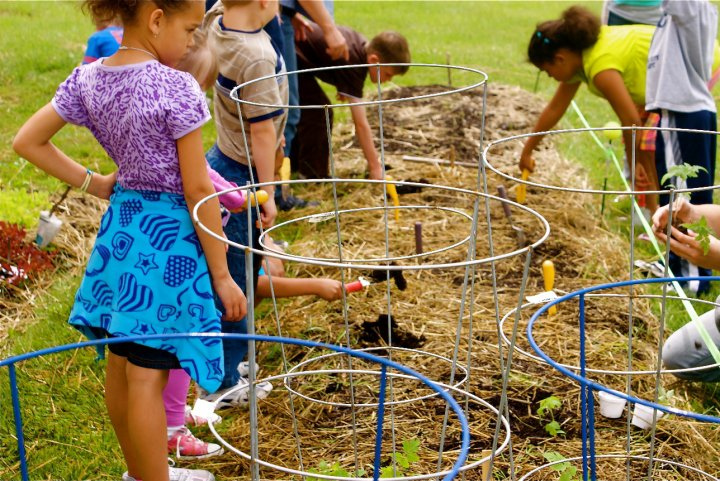Urban Agriculture

URBAN AGRICULTURE is a growing practice in the United States. It comes in a variety of shapes and sizes, often with many different individuals and organizations partnering to make it possible. Urban agriculture can range from rooftop gardens to large-scale brownfield site or vacant lot reuses. The EPA Urban Agriculture Fact Sheet notes that there are many benefits to reusing previously vacant lots. We know there are substantial potential benefits for our communities, but many of us struggle to create the connections necessary to make urban agricultural opportunities possible. The following information explores ways to create and expand urban agriculture in your area.
ADDRESSING THE CHALLENGES OF URBAN AGRICULTURE
City officials can face serious obstacles when starting an urban agriculture program. The following list from the University of Missouri Extension gives planners a good starting point for developing these programs.
- Reviews of ordinances: Existing city ordinances can make it difficult to establish urban agriculture. An initial review of current restrictions will help planners identify where to begin their efforts.
- Development of zoning specific for urban agriculture: City officials have the ability to create a zoning plan that incorporates urban agriculture into the fabric of the city.
- Inclusion of urban agriculture in city plans: By integrating urban agriculture into the larger city planning process, there will be greater access to programs and sites for community members.
- Community outreach and education: This is by far the most important element in the success of urban agriculture programs. Educating and developing partnerships with local community leaders, businesses, non-profits, and individuals will create community buy-in and program credibility.
COLLABORATE, COLLABORATE, COLLABORATE
North Carolina State University released A Community and Local Government Guide to Developing Local Food Systems in North Carolina. This guide provides excellent advice in ways to increase community involvement in urban agriculture.
- County Extension Services: County extension services have the knowledge, skills, and expertise to jump start an urban agriculture program. Often community members have no experience with agriculture so developing a relationship with extension offices can help educate program participants.
- Create a Food Policy Council: These councils serve as government advisory groups that make recommendations for ways that urban agriculture programs can localize food systems. This is a great way to bring together community members and government officials to identify issues and develop plans for urban agriculture.
- Conduct an Assessment on Local Food Systems and Urban Agriculture: Identifying areas of need and community interest are critical in developing urban agriculture plans. These assessments will help city officials create a strategy for future growth.
- Incorporate Local Food Systems into Economic Development Strategies: Including urban agriculture in future economic strategies will create long term viability for the program. By supporting the development of food system infrastructure, increased job opportunities and support of local businesses in urban agriculture can boost the local economy.
BOTTOM LINE
You can get the ball rolling by building a positive climate for urban agriculture through planning, education, and program development, but it is community involvement that will create long-term success. Listen to your community’s interests and needs. Use their input as guidance for your urban agriculture programs, and just pick a place to start with your stakeholders.